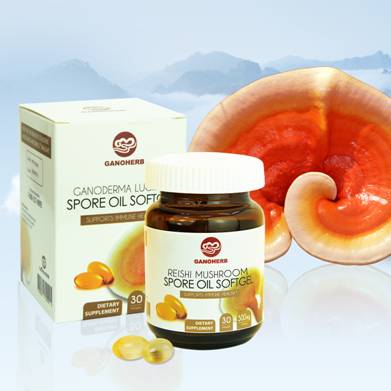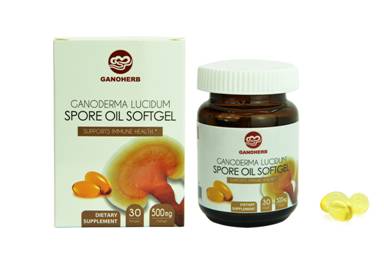1 cinnamon. Cinnamon peel has a variety of different processing methods, namely baskets and plastic film stuffing method, wooden box stuffing method, pit stuffy method, hot water hot method, air drying method and drying method. After a comparative test, it is considered that the squeaking of the basket and the plastic film is better. The method is: the peeled bark, soaked in a cold water bath for a day and a night to pick up, remove the skin and the outside of the dust and mucus, wipe the surface moisture, into the boring basket boring system. The outside of the basket is sealed with plastic film, straw, etc. The inside bottom of the basket is covered with straw, fresh bay leaves and banana leaf to a thickness of 10 cm and the floor is 5-10 cm thick. Then, the cinnamon is placed in a basket and placed on top. 10cm thick straw, cinnamon leaves and banana leaves, and covered with hessian linen, pressed tightly with bricks, placed indoors or in a cool place, the cinnamon bark was inverted once a day or every other day. So boring to the cinnamon inner surface from yellow to white brown red degree (take 6-10 days), remove and dry. The room temperature during suffocating is 17.5-33.5°C; the relative humidity is 58%-94%; the temperature in the basket is 30-46°C.
In some places, the method of sweltering oil pits is used. The specific method is: using a smelting furnace made of fire bricks, the firewood will be burned in the sampan, and the wall of the furnace will be burned to a nearly brick-red color, which means a ceasefire until the temperature of the furnace wall drops to 70- After 80 °C, the ash was completely raked out and cleaned. The bottom of the furnace was covered with 3-4 cm thick straw, and a layer of rice husks was placed on the grass. The treated cassia bark was then placed in a simmering furnace in the order of a layer of cinnamon. Layer the husk until it is full of broilers. The inner wall is also filled with chaff, and a 10-15 cm thick chaff is spread over the dome and covered with straw. The door is closed with wooden or straw curtains so that no air leakage occurs. After a few days of boring, let the water vapor be emitted, the temperature is generally around 60 °C, time is 15-20 days.
The specifications of processed cinnamon products can be classified into three types: Qiaoli, Bangui and Guangui.
a. Enterprise edge. It is collected from dry skin that is 1.2 meters above the ground and bifurcation. Peel 10 years or more of cassia bark, cut both ends together, one end cut off the outer skin of enamel, and clip it on a special concave-convex plate for drying or dry it after processing according to the above method. Rolled on both sides, with a slight sag in the middle, cinnamon 30-40 cm long, 4-6 cm wide, and 3-6 mm thick.
b. Bangui. It is made from thick cinnamon that is no more than 1.2 meters above the ground. Cinnamon bark was clamped in a bayonet, sun dried to 89%, and vertical and horizontal stacks were taken and pressed. After about 1 month, it was completely dried and served.
c. Guan Gui. Take 5-6 years of young trunk and rough branches of skin, cut and grow about 40 cm, tube width 1.5-3 cm size, skin thickness 1-3 mm, scrape off the rough outer skin, in addition to the net internal dirt, drying 1-2 days, or dry cylindrical cylinder.
2 Guizhi. Requires the best tender shoots with tail, brown red skin, cross-section yellow-white, smell spicy, length does not exceed 64 cm, the largest diameter of the head does not exceed 8 mm, no dead branches, no insects, no mildew. It is best to slicing fresh, complete sheets, bright color, aroma, and good quality.
Guizi is an immature fruit, and it is picked up by fruit or fruit sustenance (or pods), or the fruits in the fruit period are collected and dried.
Guijing is a dried, ripe fruit of a meal. When ripe fruits are harvested in autumn and winter, take them out and dry them.
Ginger picking petiole dried and Serve.
The peeled and cracked skin of cinnamon and cassia twigs is called Guiyi, and the crushed crushed end is called Guizhi, which is generally not used for medicinal purposes and can be used as a spice.
3 laurel oil. Steamed raw materials for the processing of cinnamon oil are laurel leaves, twigs, crushed cassia bark, and cassia cassia, but they are mainly cinnamon leaves. Guiye is harvested at different times and is split between leaf strips and autumn leaves. Peeling the leaves is to remove the cinnamon from March to June each year. At the same time, the cinnamon leaves and cassia twigs are collected and dried for steaming oil and spring oil. The leaves picked from August to December are called autumn leaves. The steamed oil is called autumn oil. The stripped leaves have low oil content (0.23%-0.26%), but the oil has the best quality, containing cinnamaldehyde 85%-90%. If it is stored in autumn, the steamed oil contains more than 90% of cinnamaldehyde, up to 95% high, and the oil content of Akiaki is relatively high (0.33%-0.37%), and the yield is also high, but the amount of cinnamaldehyde is contained. Lower, generally 80%-86%. The leaves collected in summer, regardless of yield and quality are low, so the harvest season is better in spring and autumn.
The method of steaming the earth oil of cassia oil is to place the hibiscus on a large iron pan, and then put the water in the pot, chop the twigs of the cinnamomum sinensis, press it into the oyster and press it tightly. Cover the aluminum lid with a lid on the lid. The pipe is connected to the lower part of the raw material tank, and the upper pipe of the raw material tank introduces the flowing water. When heated by firing, the laurel oil evaporates into gas, which condenses into liquid through cooling water and flows into the susceptor for collection. Since the relative density of laurel oil is greater than that of water, osmanthus oil is deposited on the bottom of the water.
According to the laboratory analysis, the amount of oil in the crushed osmanthus ranged from 1% to 2%, fresh leaves were from 3% to 4%, and the cassia seed was from about 1.5%. The osmanthus with even fruit stems was used as the raw material and the oil quality was better. However, the actual oil yield is low, such as about 1% of fresh foliage. Modern production mostly uses more advanced mechanical steam equipment, which has a higher oil output than the ground oil and good oil quality.
(2) concocted.
1 cinnamon. Remove the impurities, scrape off the rough skin, wash it off with clean water, and remove it after running thoroughly. Cut into large pieces, usually 1-1.2 cm long, 3-6 cm wide, and dried. When used, chopped into small pieces and used as medicine. After processing, the drug is clean and the dosage is accurate.
2 Guizhi. Remove impurities, slightly soak, wash, moisten, slice, and dry.
3 honey twigs. Take honey, add appropriate amount of boiled water to dilute, dip into the net cassia slice and mix well, moisten, place in the frying container, heat it with slow fire, fry until the old yellow, stick out and let cool; per 100 kilograms of cassia With 15 kg of honey.
4 osmanthus. Take this product to pick up impurities and rotten fruit, sieve to remove dust. Such as clean, do not wash with water, micro-sun can be used for medicinal purposes; if not clean, then rinse with water, immediately remove and dry, not long-term wash.
Ganoderma Lucidum Spore Oil Softgel (Reishi mushroom spore oil softgel) uses organic shell-broken Ganoderma spore powder as ingredients, combined with our patented supercritical CO2 extraction technology, making it the ultimate Ganoderma dietary supplement product on the market with the highest purity.
When it comes to dietary supplement product, safety is always the top priority. Our Ganoderma ingredient comes from our self-built Ganoderma farm, which has acquired 4 organic certifications from China, Japan, the US, and the EU. We make sure every step of the whole process is safe and traceable without any kind of contamination.

The supercritical CO2 extraction technology uses liquefied CO2 as a solvent to dissolve spore oil from shell-broken spore powder under hyperbaric environment. After CO2 evaporates, it is left with pure Reishi Spore Oil. This method makes sure that no chemical reagent will be left in the spore oil during the extraction process while still maintaining the highest purity. The triterpenes content in this product is as high as over 20%.

Ganoderma spore oil is great for people with severe chemical liver damage due to long-term drinking and high pressure. It also assists cancer treatment and helps reduce the side effects from chemo and radiotherapy and greatly increase the level of immune cells. Reports have shown that Ganoderma Oil can inhibit the growth of internal and external tumor, with a success rate of 56.3%.
Recommended dosage: 2 times a day, 2 capsules each time.
Ganoderma Lucidum Spore Oil Softgel,Reishi Spore Oil,Ganoderma Oil
Ganoherb International Inc. , http://www.ganoherb.us